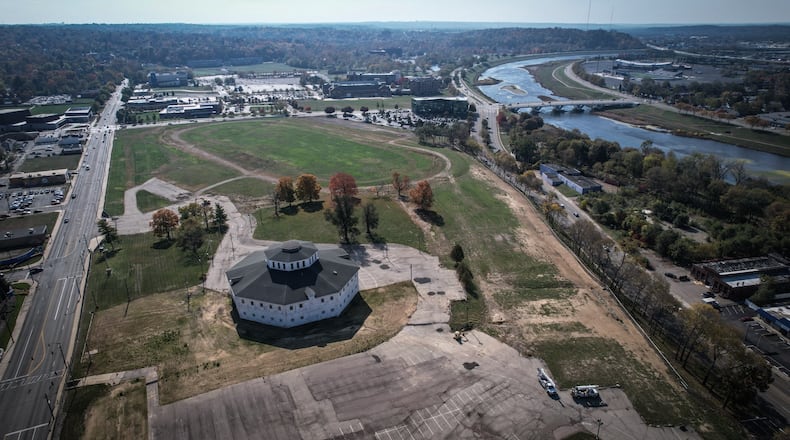“We knew that there would be an ask because there is no infrastructure in the site,” said Dayton City Manager Shelley Dickstein. “The fairgrounds didn’t really require that and that’s a big expense for the redevelopment.”
The Dayton City Commission last month approved issuing more than $21 million in new debt through general obligation bonds, which includes $4.1 million for improvements to the onMain site.
Brian Smith, financial services supervisor for Dayton’s treasury division, said the city issues debt to fund capital improvements, economic development projects, equipment purchases and to refund existing debt.
“This is essentially support for the development, construction and public infrastructure costs associated with phase 1 of the onMain project,” Smith said.
onMain is a partnership between the University of Dayton and Premier Health that seeks to redevelop a 38-acre property on South Main Street that served as the Montgomery County Fairgrounds for more than 160 years.
UD and Premier Health teamed up to purchase the site back in 2017. The county fair relocated to Jefferson Twp.
State officials in August revealed that onMain has been awarded $35 million from Ohio’s Innovation Hubs program to make Dayton an innovation hub.
The state says the innovation hub project will include a local match of up to $23 million and private sector investment worth up to $37 million.
onMain leadership said the $35 million in state funding primarily will be used to construct a Digital Transformation Center, which will be the hub’s headquarters and a cornerstone for the site.
The 125,000-square-foot center will be a collaborative space driving advancements in digital technology, with a particular focus on aviation and national defense, onMain leaders said.
The innovation hub is supposed to be the first investment at the property. The onMain master plan calls for complementary uses that could include offices, commercial and residential buildings, public amenities and green space.
Local and state officials say the hub by 2031 could help create 2,000 new jobs and attract $500 million in new research funding.
Chris Lipson, senior economic development specialist with the city, said the bond funding is Dayton’s contribution toward a much larger infrastructure investment by onMain.
“It will partially fund the construction of streets, sewers, sidewalks, etc. for the initial phase of the development,” he said.
Construction of the infrastructure and the first building or buildings may take place at the same time in 2025 and 2026, he said, adding that onMain will manage the project.
The South Main Street property does not have much infrastructure since it mainly served as a fairgrounds and a significant amount of the space was used as a large horse track, barns and other low-impact uses.
The city has approved a planned development (PD) zoning overlay for the site, which means the owners can build commercial and residential buildings that comply with the terms of the PD and meet zoning and building code standards, Lipson said.
“Final infrastructure plans will be reviewed and approved by the relevant city departments,” he said.
Lipson said agreements and approvals related to the financing and construction of the project are expected to materialize in the next few months.
“The approved PD calls for high density commercial and residential development,” he said. “The onMain Master Plan reflects that level of investment and development. The city expects and hopes to see significant investment and the buildout of a vibrant neighborhood that enhances the ongoing revitalization of the greater downtown.”
onMain leadership said they are continuing to discuss agreements with city to help initiate development at the former fairgrounds site.
“At this stage, the final details and associated requirements for use of city funds are still being determined,” leaders said.
About the Author





